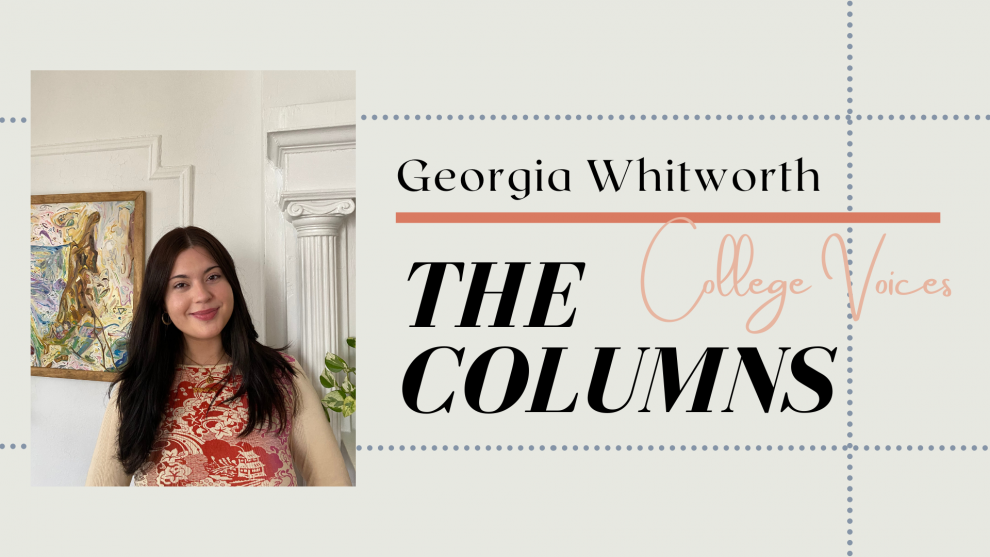When I was growing up, my dad preached two things: to treat others how you’d like to be treated and that life is unfair. While I recognized the value in both of these sayings, I didn’t understand how it could be applied in every aspect of my life.
As a senior in college about to graduate, I appreciate why my dad instilled those ideas in my sister and me, and what they mean in relation to business, the climate and fashion. I’ve always loved fashion and everything it had to offer, from the glitz and glamor to the lure of luxury that fashion offers. I always wanted to buy new clothes, and was able to convince my parents (most of the time) because the shirt I wanted was “only” $10.
After I took my first sustainability class in college, I realized the true cost of that $10 shirt — on the environment and the workers among the global supply chain. While I’m wearing my $10 shirt, a garment worker is being paid a salary with which they could never afford the $10 shirt that they made. While my dad always told me life was unfair, the working conditions that garment workers experience along the global fashion supply chain is more than unfair — it’s unethical and immoral.
Companies such as WRAP, the Worldwide Responsible Accredited Production, give me hope as I venture out into the world of sustainability and fashion, as they understand the importance of creating a more than fair life for garment workers. WRAP is an independent, credible organization dedicated to the importance of treating others how you’d like to be treated, ensuring that garment workers along fashion’s global supply chain are treated ethically and paid fair wages in facilities with safe working conditions. WRAP checks for this standard through its comprehensive, third party auditing process of factories, providing a certification that is recognized worldwide as evidence of a facility’s commitment to uphold social and ethical standards.
I had the chance to interview Avedis Seferian, the CEO of WRAP, and learn more about how crucial it is to maintain ethical working conditions in the fashion industry. I was interested to learn what the WRAP certification means to him and why he finds his work to be so important. Seferain discussed the depth of the fashion industry’s reach — he shared that since everyone wears clothes, he feels that everyone has a stake in the industry, and that no one should be harmed in the making of clothes. To Seferian, certifications like WRAP’s mean that there is independent and credible validation of working conditions in which he would feel okay knowing that he or his children were inside.
After all, how can we rely on brands to ensure the ethical treatment of their garment workers if the state of those conditions is conveyed through their word alone? Without a third-party certification focused on the best interest of garment workers, how do we know the people making our clothes are toiling under conditions that you or I would be willing to work in?
So, how do these unethical working conditions that WRAP is trying to change tie directly back to the climate and fashion? Climate change impacts every aspect of life as we know it — from the land we stand on to the air we breath, the water we drink, the oceans we swim in and even the clothes we wear and the people who make them. Fashion can never be a sustainable industry if the workers along the global supply chain aren’t being provided with fair wages and equitable lives. As 80% of 70 million garment workers globally are women and 80% of people displaced by climate change are women according to research by the United Nations, this environmental and social crisis disproportionately impacts women of color. Women’s rights, equity and environmental justice are interconnected, and where they cross paths is within the work that WRAP is doing; WRAP provides the transparency and morality where brands have been failing for too long.
As we move forward, we must change the narrative and create a world where life is fair — where the fashion industry more deeply considers the environment and takes into account those among the global supply chain and where all apparel and shoe companies employ ethical and fair labor practices that live up to WRAP standards to build a sustainable future for both people and the planet. We must create a world where the woman who made a $10 shirt can afford to purchase it. We must use business as an innovative tool to start down a new path that is the opposite of the patterns of historical inequity and inequality in the fashion industry. We must look at climate change and industries such as fashion with a holistic approach to move forward under a more empathetic lens.
I want to use the few simple words that my dad taught me to live by — to treat others how you’d like to be treated and that life is unfair — as my inspiration so that, like Seferian and WRAP, I can work toward a world where all people are treated equally and ethically in the fashion business, creating a fair life for everyone.








